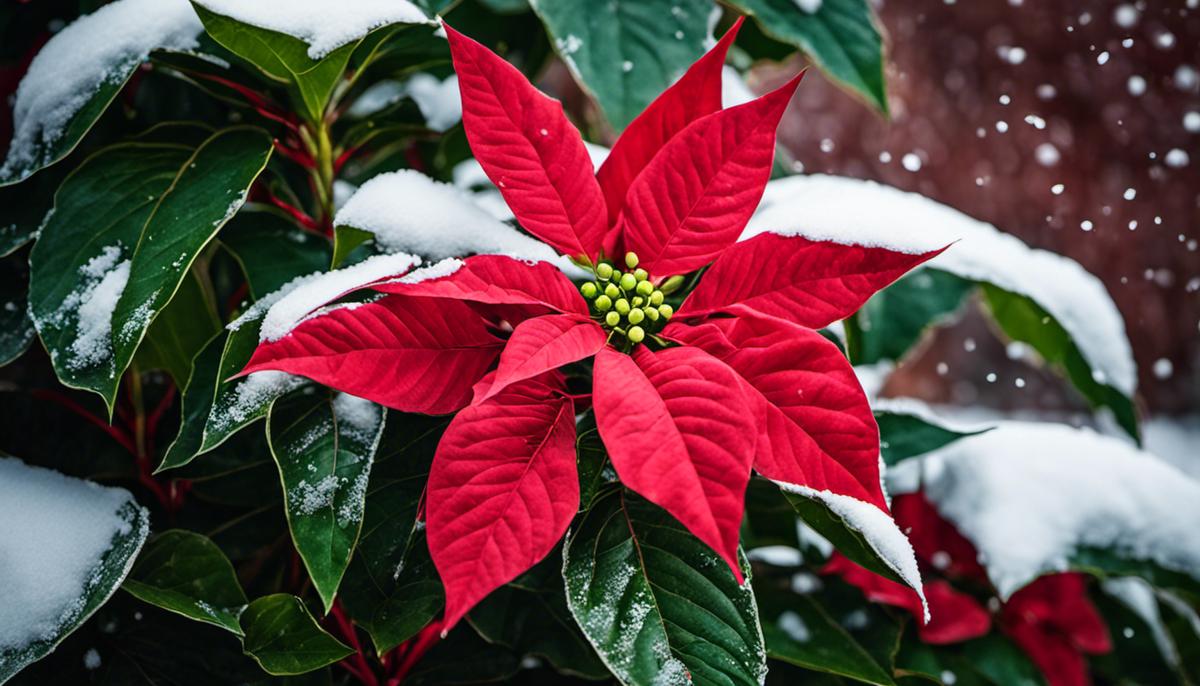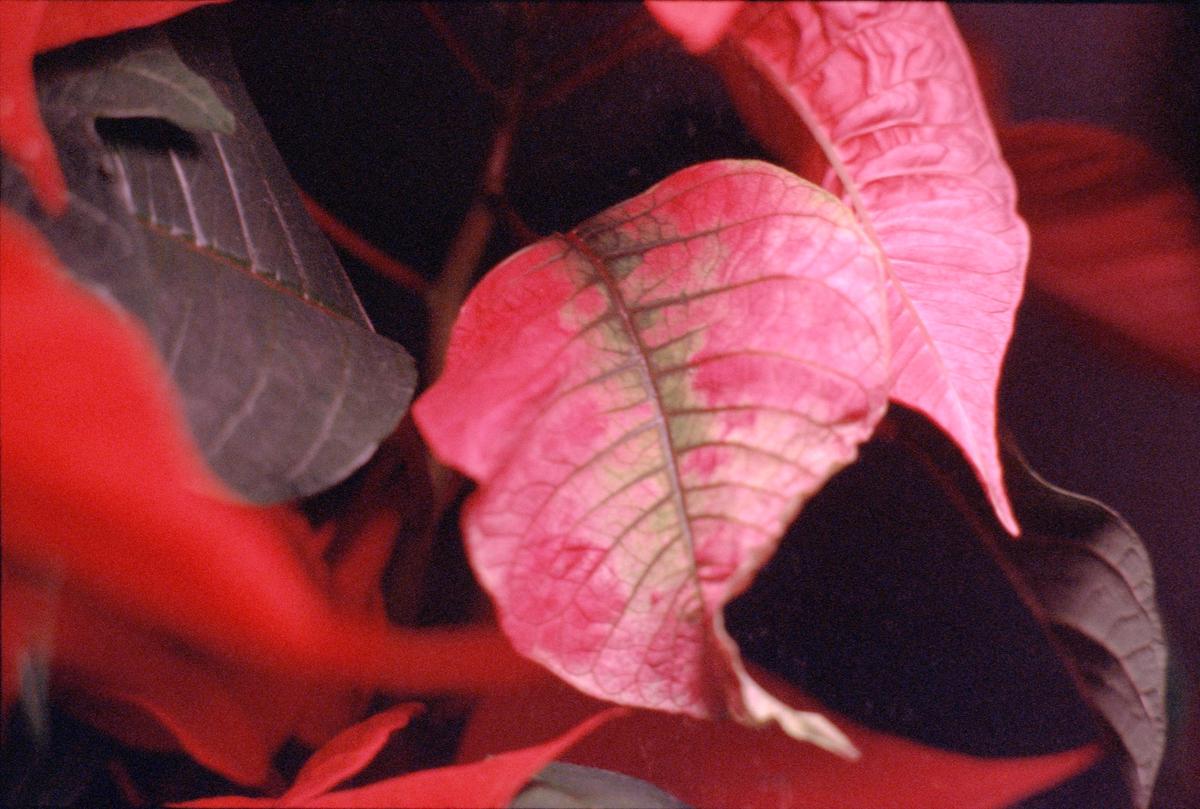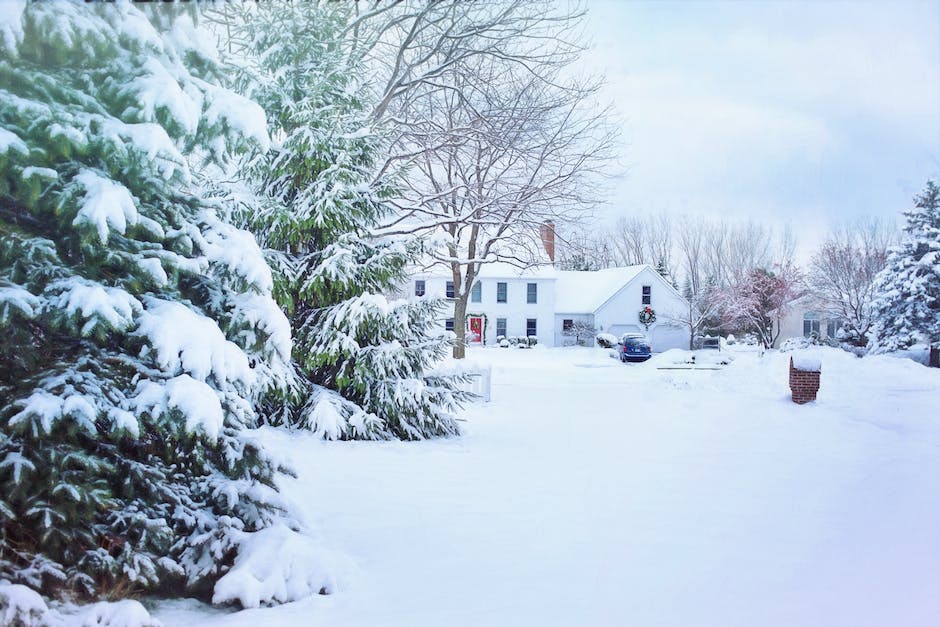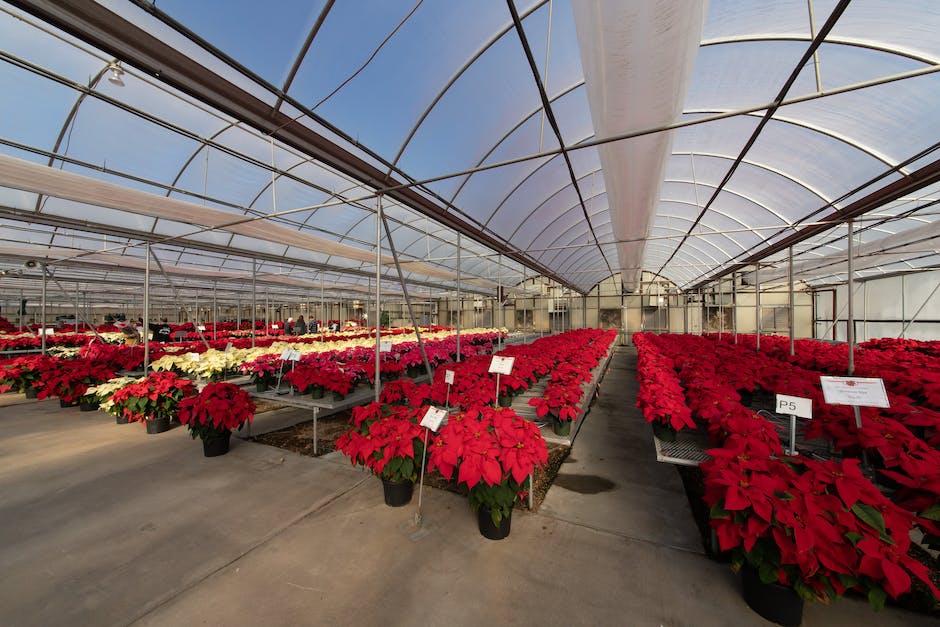Can Poinsettias Survive Winter Outdoors? Exploring the Truth

Graceful with its vibrant red and green foliage, poinsettias have become a beloved symbol of the holidays. However, as these delightful plants start to grace homes in their millions every Christmas, a question often comes up: can they survive outside in winter conditions? Delving into the remarkable world of poinsettias, we’ll strive to answer this question by exploring their environment of origin, character, preferences, their response to winter conditions, and ways to boost their resilience against cold weather. Understanding these factors could be instrumental in maintaining outdoor poinsettias during the icy grip of winter.
Understanding Poinsettias: Origin, Traits, and Preferences
Welcome to another fantastic journey into the wonderful world of hobby horticulture! Today, let’s explore the fascinating backstory and characteristics of one of the most festive, cheer-spreading and stunning members of the floral kingdom: yes, it’s the radiant poinsettia.
Native to Mexico and Central America, the poinsettia has traveled far to charm households across the globe. It is primarily cherished for its holiday flair, blooming copiously in the colder months. This charming attribute can guide décor decisions and impart a unique spectrum of warmth and holiday enchantment to any setting.
But let’s dive deeper. What makes poinsettia so lovable and how does one ensure these living beauties remain hardy and vibrant? Well, understanding their preferences—and making tweaks to accommodate them—is where the magic happens.
Light, please
Poinsettias are lovers of light; it’s essential for their radiant color and design pattern. Place them near a sunny window where they can bathe in indirect light. Avoid southern windows, though: they might get too hot and end up scorching.
A thing for the cool
Although they adore light, poinsettias have a peculiar preference for lower temperatures. They thrive best in environments that stay around 65-70 degrees Fahrenheit during the day and drop a bit during the night – say, to about 60 degrees.
Moisture matters
Poinsettias are not big fans of excessive wetness; it could lead to root rot. However, they do need evenly moist soil. Aim for a balance, by watering thoroughly when the surface of the soil feels dry. Ensure the pot drains well, and avoid leaving the plant standing in water.
Leaf drop: not a fan
Watch out for poinsettias dropping leaves prematurely. It could signal that something’s off. It might be due to temperature swings, poor light, or stress from watering. Modulating these factors carefully can ensure a healthy, leaf-full poinsettia.
Avoid reflective Wraps
Those bright, shiny wraps often put around the poinsettia pot might look festive, but can cause trouble by preventing water drainage, leading to sogging roots. It’s better to poke holes in the wrap at the bottom for drainage or use a decorative pot instead.
So, there you have it, the ins and outs of what makes poinsettias tick. With an unwavering commitment to meeting their needs, it’s possible to create an environment where these holiday beauties can thrive. It may take some effort, but the reward—a house filled with magnificent, vibrant poinsettias—is more than worth it.
Knowledge is the key as we continue our horticultural journey, exploring some of the fantastic and fascinating plants that beautify our planet. And remember, a poinsettia isn’t just for Christmas; with attentive care, you can enjoy its beauty year-round. Stay green, folks!

Photo by michaelelliottphotography on Unsplash
Poinsettias in Snow: Testing the Winter Threshold
The Drama of Winter: Poinsettias and Cold Weather
Winter brings forth a landscape adorned with snow, shimmering icicles, and the ethereal beauty of poinsettias adding delightful warmth to the wintry white scene. Steeling these tropical natives to thrive in colder climes is a question of understanding their unique requirements and nurturing their resilience against the winter chill.
Winter can set quite the challenge for poinsettias, given their Mexican provenance. Let’s explore how well poinsettias handle winter conditions and what factors dictate their survival or downfall in the chilly weather.
Poinsettias outdoors vibrant in the crackling cold air? Surprisingly, yes, provided the temperature doesn’t go down further than 45-50 degrees Fahrenheit at night. Those in USDA Zones 9-11 Indian summer can keep their poinsettias outside for the winter. However, ensure they are sheltered from the winds. Bear in mind, allowing them exposure to temperatures below this range can cause significant damage leading to plants lose leaves or even succumbing to the frosty cold.
Even though they handle lower temperatures startledly well, poinsettias must never be left in standing water, especially during the winter. The cold water, combined with frigid weather can worsen root rot and eventually kill your poinsettia. Make sure potted plants have good drainage and check for saucers filled with water underneath the plant.
Arguably the most important tip for keeping poinsettias healthy during the winter is to monitor their exposure to drafts and dramatic temperature fluctuations. A rogue draft or a sudden temperature shift can massively distress these sensitive plants, causing a premature leaf drop, resulting in a swift demise.
Interestingly enough, a significant contributing factor to poinsettia survival or demise during winter is the quality of care they receive prior to the cold setting in. A poinsettia that is healthy, robust, and well-nourished leading into winter is more likely to withstand the chill and thrive.
Additionally, poinsettia winter survival comes down to species selection. The Mexican Poinsettia, Euphorbia Pulcherrima, is more tolerant to cold than other species. If one is uncertain about their capabilities to maintain a warm environment for their plants, considering this species could be a better fit.
Last but not least, brace your poinsettias by insulating them properly. Whether using a horticultural fleece or moving them to a more protected location, safeguarding your poinsettias will help to ensure they survive the harsh winter weather.
Remember, gardeners, understanding the essentials of poinsettia hardiness during winter can pave the way to some remarkably resilient and head-turning plants. The journey of being a proud poinsettia caregiver in winter, although challenging, can be deeply rewarding and infuse added joy into your wintry escapades. Winter needn’t spell the end for your treasured poinsettias. Instead, with a bit of horticultural grit and knowledge, it can just be another season of blossoming wonder.

Winter-Proof Your Poinsettias: Tips and Tricks
Transitioning poinsettias to the outdoors after winter can be an exciting process. Once conditions become optimal, these plants can thrive and lend their luscious hues to amp up the aesthetics of winter gardens. However, despite their robust nature, outdoor survival in winter is still a challenging feat for poinsettias. Their tropical heritage has endowed them with a delightful spread of colors but little resistance to cold climates. Therefore, an enthusiastic hobbyist must leverage thoughtful stratagems to ensure their survival.
Even within the confinements of tropical beauty, poinsettias exhibit a notable level of durability. They notably resist temperatures as low as 50 degrees Fahrenheit. Lower than that, however, and these shining holiday stars may begin to show signs of distress. So, providing them a sheltered space, like a balcony or a patio during the harshest winter spells can prove beneficial. Gardeners must remember that the aim is not to recreate their native Central American clime, but to stave off the effects of a chilling winter.
Sophisticated hobbyists know that standing water during winter is a poinsettia’s nemesis. These plants love moisture, but an excess of it during the cold seasons can lead to root decay and fungal infections. The strategy lies in using well-draining soil and pots, and ensuring that the plants are watered only when the top layer of soil feels dry.
Another factor that can catch hobby gardeners unawares is unexpected temperature fluctuations. These can damage poinsettias, due to their sensitivity to unexpected changes in temperature. The key here is to be vigilant and move the plants to shielded locations, if a sudden cold snap is expected.
A crucial strategy for winter survival lies not in the season itself but the precedent months. Care should be lavished on poinsettias leading up to the winter months. Fertilizing the plants in preparation for these cooler times is advisable. A high-nitrogen blend is recommended, as this will help the plant picturesquely unfold its bracts.
Critical thought in species selection can make a difference in a poinsettia’s resilience against winter. Certain poinsettia cultivars exhibit higher tolerance to cold weather than others. For instance, the ‘Winter Rose Red’ is a desirable option due to its resistance to cold conditions.
To augment all these practices, providing insulation for poinsettias is a prudent move. Materials such as frost cloths or bubble wraps can be used to cover the plants during the coldest times. However, care should be taken to ensure that these coverings are removed during the day so as to prevent overheating as the sun’s rays intensify.
Winter care for poinsettias is indeed a rewarding challenge. However, when one sees the vibrant display of poinsettias blooming in the garden, the pay-off is beyond measure. When about 70% of the poinsettia’s small, green buds are colored, winter hobby horticulture has indeed achieved success. It’s the very proof that despite their tropical lineage, poinsettias can become a heartwarming part of a winter garden story with just a bit of extra care. No winter scene is complete without them; they are the beacons of brilliance in a winter white landscape after all.

While the allure of keeping this Christmas icon outdoors even during winter is tempting, it certainly poses myths to test and challenges to confront. Armed with a thorough understanding of poinsettias, we can surmise that success hinges on the plant’s natural cycle, adaptability, and our diligent care. So, does a poinsettia have a fighting chance in the snowy landscape of your garden? The answer seems to lie in the careful balance of its inherent resilience and our attentive nurturing. And, perhaps, the enduring sense of wonder and joy that a poinsettia can bring might just make all these efforts entirely worthwhile.



